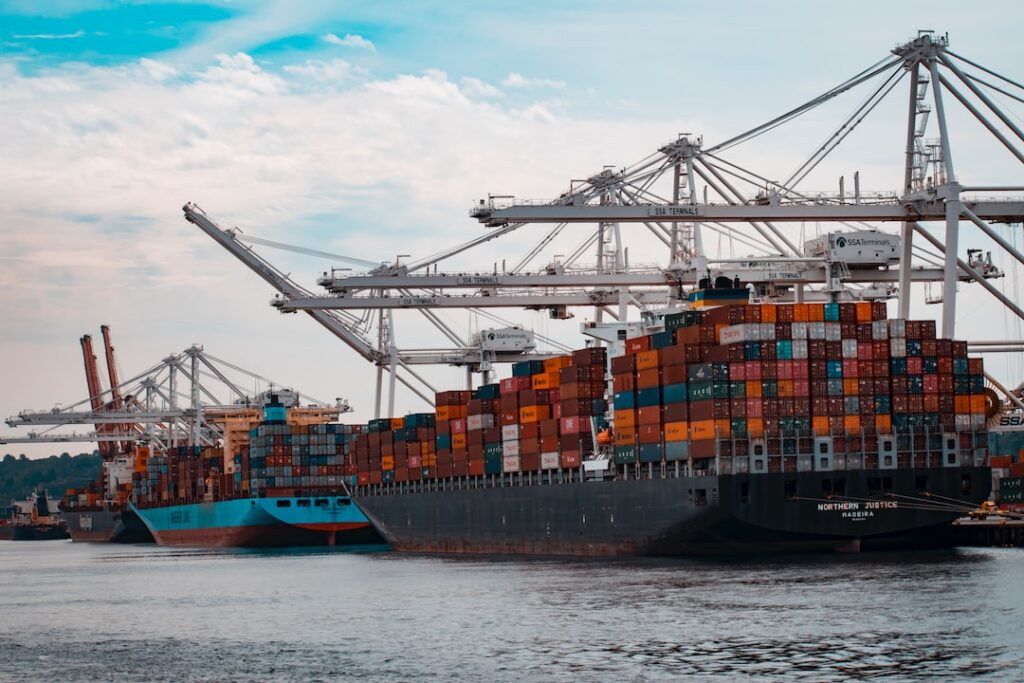Shipping Rates from China to US:
Complete 2025 Cost Guide
Why Shipping Rates from China to US Matter
Shipping between China and the United States is one of the busiest trade lanes in the world. From consumer electronics and apparel to furniture and auto parts, billions of dollars worth of goods cross the Pacific each year. For businesses of all sizes—whether you’re a large importer or a small e-commerce seller—understanding shipping rates from China to US is critical to maintaining profitability and competitiveness.
But here’s the catch: shipping costs aren’t static. They fluctuate based on fuel prices, seasonal demand, global events, and even port congestion. That’s why it’s essential to stay updated on current rates, available options, and strategies for cost savings.
In this guide, we’ll break down everything you need to know about shipping rates from China to US in 2025—including cost comparisons by mode, hidden fees to watch out for, and tips to reduce your expenses.

Ocean Freight Rates from China to US
Ocean freight remains the backbone of U.S.-China trade, handling the majority of containerized goods.
FCL (Full Container Load) Costs
FCL shipping is ideal when you’re moving large quantities. A 20-foot container typically ranges from $2,000–$3,500, while a 40-foot container may cost between $3,500–$6,000 in 2025, depending on the route and demand.
LCL (Less than Container Load) Costs
For smaller shipments, LCL is more cost-effective. Rates are usually calculated by cubic meters, starting around $50–$80 per CBM. However, additional handling fees can make LCL less predictable than FCL.
Transit Times and Port Options
- West Coast (Los Angeles, Long Beach): 15–20 days from Shanghai.
- East Coast (New York, Savannah): 25–35 days due to Panama Canal transit.
- Gulf Coast (Houston, New Orleans): Around 25–30 days.
Air Freight Rates from China to US
Air freight is the go-to solution when speed matters more than cost.
Standard Air Freight Pricing
Standard air freight averages $5–$8 per kilogram in 2025. Costs fluctuate based on shipment size, weight, and fuel surcharges.
Express Courier Services (DHL, UPS, FedEx)
Express services are faster—often 3–5 days door-to-door—but costlier. Rates typically range between $8–$12 per kilogram, making them suitable for small, urgent shipments like electronics or samples.
Air Cargo Weight and Volume Considerations
Air freight is calculated by chargeable weight (whichever is greater between actual weight and volumetric weight). Oversized packages can quickly increase costs.
Comparing Shipping Modes: Cost vs. Speed
| Mode | Average Cost (2025) | Transit Time | Best For |
| Ocean Freight (FCL) | $3,500–$6,000 per container | 15–35 days | Bulk goods, cost savings |
| Ocean Freight (LCL) | $50–$80 per CBM | 20–40 days | Small to mid-sized shipments |
| Air Freight | $5–$8 per kg | 5–10 days | Medium urgency |
| Express Courier | $8–$12 per kg | 3–5 days | Small, urgent parcels |
| Rail Freight (limited) | $3–$5 per kg | 20–25 days | Alternative routes |
Additional Costs to Consider
Customs
Clearance Fees
Importers should budget for clearance fees, brokerage services, and documentation charges that can range from $100–$500 per shipment.
Insurance
Costs
Cargo insurance is highly recommended, generally costing 0.3%–0.5% of the shipment’s value.
Warehousing and
Last-Mile Delivery
U.S. inland trucking and warehousing can add $200–$1,000+ depending on distance and location.
Finding the Right Balance Between Cost and Speed
Navigating shipping rates from China to US in 2025 requires balancing speed, budget, and reliability. Ocean freight remains the backbone for bulk shipments, while air and express services are essential for urgent cargo.
By working with an experienced freight forwarder like Shapiro, businesses can secure competitive rates, simplify customs, and streamline logistics. Whether you’re a large importer or a growing e-commerce seller, understanding these costs will help you plan better and stay ahead in today’s global marketplace.
Key Ports for China-U.S. Trade
While Shanghai and Los Angeles dominate this lane, importers often work with nearby or alternative ports depending on carrier schedules, congestion, or costs. Below are the top ports in China and the U.S. relevant to the Shanghai–Los Angeles trade corridor.
Top Ports in China
| Port | Volume | Significance |
| Port of Shanghai (CNSHA) | Handled 47 million TEUs in 2023 | • World’s largest container port • Direct, high-frequency sailings to Los Angeles and Long Beach |
| Port of Ningbo-Zhoushan (CNNGB) | ~35 million TEUs annually | • Key backup option when Shanghai faces congestion • Major exports: machinery, textiles, electronics |
| Port of Shenzhen (CNSZX) | ~30 million TEUs | • Strategically located near Hong Kong, serving southern China • Major exports: electronics and consumer goods |
| Port of Qingdao (CNTAO) | ~25 million TEUs | • Leading port in northern China, serving Shandong province • Strong connections for bulk goods & chemicals |
| Port of Guangzhou (CNCAN) | ~24 million TEUs | • Southern hub for furniture, auto parts, and textiles • Modern facilities with growing international links |
Top Ports in the United States
| Port | Volume | Significance |
| Port of Los Angeles (USLAX) | ~9.9 million TEUs in 2023 | • Largest U.S. container port • Handles ~20% of all U.S. imports |
| Port of Long Beach (USLGB) | ~9.1 million TEUs annually | • Adjacent to Los Angeles port • Together, LA + Long Beach = ~40% of all U.S. containerized imports |
| Port of New York & New Jersey (USNYC) | ~7.8 million TEUs annually | • Largest port on the U.S. East Coast • Alternative entry for goods shipping via the Panama Canal |
| Port of Savannah (USSAV) | ~5.4 million TEUs | • Fast-growing port in the Southeast U.S. • Known for efficient rail and trucking connections inland |
| Port of Houston (USHOU) | ~3.9 million TEUs annually | • Largest Gulf Coast port • Major hub for chemicals, plastics, and energy-related imports |
Why These Ports Matter
- China’s Ports: Offer multiple gateway options for exporters depending on production location and carrier availability.
- U.S. ports: Provide importers flexibility—most goods from Shanghai flow through Los Angeles/Long Beach, but diversions to East/Gulf Coast ports happen during congestion or to reach certain markets faster.
Step-by-Step:
How to Get Your Shipment from Shanghai to Los Angeles
1. Customs Requirements
- Classify goods under the correct HS code
- File necessary import documents (Commercial Invoice, Packing List, Bill of Lading)
- Pay duties and taxes
2. Choosing Incoterms
Incoterms define buyer vs. seller responsibilities.
For U.S. importers, FOB (Free on Board) or EXW (Ex Works) are common choices.
3. Partnering with a Freight Forwarder
Working with an experienced forwarder like Shapiro ensures:
- Negotiated rates with carriers
- End-to-end logistics management
- Assistance with compliance and customs
4. Tracking Shipments
Use Shapiro 360, our digital platform, to:
- Monitor cargo in real-time
- Get automated updates on ETA & delays
- Streamline communication across your supply chain
Tariffs and Duties on China–U.S. Shipments
Tariffs are a major factor in the true landed cost of goods shipped from China to the U.S. Beyond freight, importers must plan for duties, fees, and sometimes additional trade-related tariffs.
Check our Current Tariffs Resource Page for up-to-date duty schedules.
1. U.S. Import Duties & HS Codes
- Every product entering the U.S. is classified using an HS (Harmonized System) code.
- Duty rates range widely, depending on the classification.
- Duties are applied to the declared customs value of your shipment
- Imposed on many Chinese-origin goods as part of trade measures.
- Add extra duties to the base tariff rate.
- Affects electronics, furniture, machinery, plastics, and textiles.
- Exclusions are sometimes granted but shift frequently.
- Separate from Section 301, these apply to steel and aluminum imports, regardless of origin.
- Adds extra duties for steel and aluminum containing products.
- Impact importers sourcing raw materials or products with significant metal content (e.g., auto parts, construction materials).
Tariff engineering is a powerful way for importers to legally reduce their duty exposure by adjusting product design, material composition, or supply chains before goods ship from Shanghai to Los Angeles. For example, a textile importer may redesign products by switching from 100% cotton, which carries a 15% duty, to a cotton-polyester blend that falls under an 8% duty rate. Electronics companies often modify product components to avoid HS classifications that trigger higher Section 301 tariffs, while manufacturers using steel and aluminum impacted by Section 232 duties may choose to source prefabricated parts from countries exempt from these tariffs. In some cases, shifting final assembly from China to another country can help avoid U.S. trade duties altogether. These strategies, when planned correctly, can result in significant savings and improved competitiveness, making tariff engineering an essential tool for businesses navigating today’s complex trade environment.

2025 Shipping Trends:
What to Expect
Global Trade Policies
U.S.-China trade relations will continue to influence tariffs and duties. Staying updated on policy changes is critical.
Impact of E-commerce Growth
With cross-border e-commerce booming, small parcel volumes are driving demand for air and express services.
Sustainability in Shipping
Carriers are adopting greener practices, from low-sulfur fuels to carbon-neutral programs, which may affect pricing.
How to Get the Best Shipping Rates from China to US
Working with a Freight Forwarder
Partnering with a trusted freight forwarder like Shapiro helps negotiate better rates, handle customs clearance, and ensure smoother transit.
Consolidation Shipping Benefits
Consolidating shipments reduces costs for smaller importers by sharing container space.
Long-Term Contracts vs. Spot Rates
While spot rates may seem appealing, long-term contracts provide stability and protect against seasonal rate hikes.
Key Factors Influencing Shipping Rates
Distance and Trade Routes
The U.S. is a huge country, and shipping costs vary depending on the port of arrival. For instance, shipments to West Coast ports like Los Angeles or Long Beach are typically cheaper and faster than those to East Coast ports such as New York or Savannah, which require longer sailing times through the Panama Canal.
Shipping Mode (Air, Ocean, Express, Rail)
The mode of transport you choose plays the largest role in determining rates:
- Ocean freight: Most economical for bulk shipments, but slower.
- Air freight: Faster but significantly more expensive.
- Express courier services: Best for small, urgent shipments.
- Rail freight: Limited but emerging option via China-Europe-US connections.
Seasonal Demand and Peak Seasons
Shipping costs rise during peak seasons such as the months leading up to Christmas and Chinese New Year. Importers often face rate surges due to container shortages and high demand.
Tariffs, Customs, and Duties
Trade policies and tariffs—especially those imposed during U.S.-China trade tensions—can dramatically affect total landed costs. Businesses must account for import duties and customs clearance fees on top of shipping charges.
Fuel Prices and Surcharges
Bunker fuel costs directly impact ocean freight rates, while jet fuel affects air freight pricing. Many carriers apply surcharges when fuel prices fluctuate significantly.
Frequently Asked Questions
Ocean freight (FCL or LCL) is the most cost-effective, especially for large shipments.
Transit times range from 15 days (West Coast) to 35 days (East Coast) by ocean, and 5–10 days by air.
Yes, most freight forwarders and carriers provide online tracking tools.
While not mandatory, insurance is highly recommended to protect against loss, theft, or damage.
Rates are influenced by fuel prices, seasonal demand, trade policies, and global disruptions like port congestion.
Yes, for urgent or lightweight shipments under 100kg, express services are often the most reliable.
